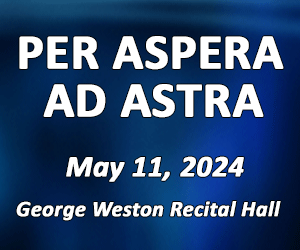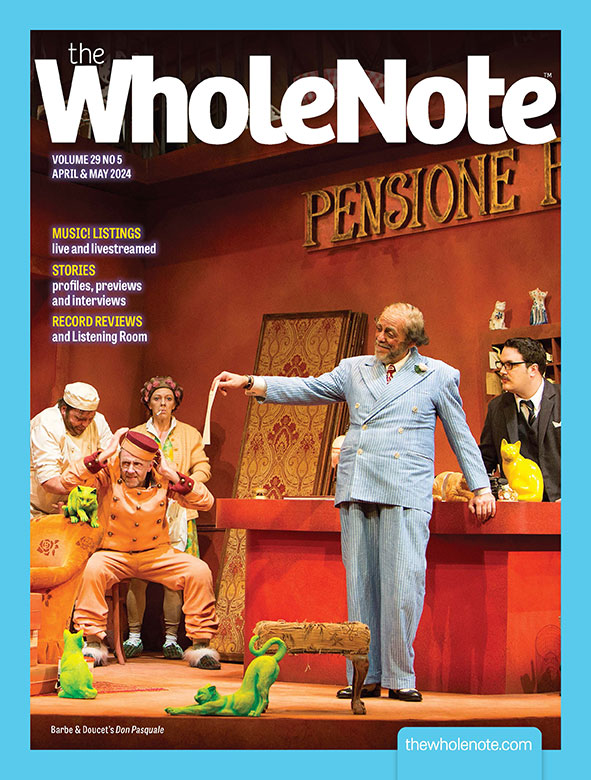I checked The Wholenote’s snail-mail really late tonight — deep in the throes of putting the November issue to bed, and have to walk down four flights of stairs to get it. But I needed a break before diving into what has become a serious love/hate ritual for me over the nearly two decades of doing this: namely the task of closing the issue by writing this Opener.
There were a few cheques in the mail, a “thank-you” card from a printer rep I can’t remember talking to on the phone and — here’s the point — yet another reader survey, clipped from the September magazine, completed by hand, stamped and placed in a hand-addressed envelope and put into the mail. The flood of survey responses has dried to a trickle at this point, so as I opened it I found myself thinking “What if this were the last one? If so, what would the ‘last word’ from our readers be?”
“Thank you for printing WholeNote” she wrote. “It has introduced me to so many venues in Toronto. Toronto is such a vibrant musical city but I did not know it until I found your magazine about 7 years ago and I lived in Toronto most of my life. Please continue this magazine, I get it every month. It would be such a loss to me if I didn’t get it.”
Aside from the fact that it’s always nice to brag, the profound point I get from this lovely affirmation is that we had nothing to do with creating the vibrancy — it’s the city that has that. All we did was open someone’s ears to the pulse of what is already going on.
Stretching the point still further, it seems to me that what The WholeNote has done for that individual’s sense of the vibrancy of our city’s musical life, so music itself does to tune us, individually and collectively, to the inextinguishable roaring vibrancy of life.
Increasingly, looking around, people have taken music and commoditized it, made it entirely personal — shoving little earbuds in their ears, bopping to their own individualized rhythms in a helter of other people, all slightly out of sync in their aloneness.
I happen to think the tide is turning, though. Precisely because the digitized world gives us the capacity to be completely alone, the messy meat monkey that is the human self gets hungry to escape a world that is suddenly, alarmingly, back to front. And seeks out a world of community, of congregation. It may not be to concert halls as we know them, but it will be rooms full of people engaged in listening to the same live roaring hum of music in the ears.
“Teach me to listen, teach me to sing, teach me to play, teach me how to learn” comes the gathering cry. And music says: “I can do that.”
Here are some interesting snippets of all this from the writings you will find in this issue:
Hans de Groot in Art of Song: “Last summer my daughter Saskia turned twelve [and] chose ... to move to the Downtown Vocal Music Academy on Denison Avenue, ... the brainchild of Mark Bell, a man known in musical circles for his leadership of Canada Sings, a community Sing-along that meets every second Tuesday of the month somewhere in East Toronto.”
Jack MacQuarrie, our Bandstand columnist, digging into studies supporting the benefits of music and quoting the lead scientist on one such study: “Everyone can benefit from music training. A wealth of empirical, neuroscientific evidence supports the positive influence of music training on numerous non-musical brain functions, such as language, reading and attention ... across the lifespan into older adulthood.”
Richard Herriott, interviewed by Rebecca Chua, talking movingly about the music series he and Winona Zelenka will launch at St Stephen in-the-Fields Anglican Church this month, not only to raise awareness of and funds for autism spectrum research, but just as importantly to create a context for people with autism spectrum disorders to attend live music and have the particularities of their individualism embraced as part of the concert experience.
Ben Stein, in Choral Scene, describing a concert by the Orpheus Choir of Toronto which will feature Benjamin Britten’s 1938 cantata World of the Spirit: “Britten was a life-long pacifist who lived briefly in America during the beginning of WWII, in part because his pacifist leanings were not well received in pre-war Britain.” A concert like this requires more than passive spectatorship — it combines “choral music and visual imagery, in the kind of multimedia presentation that has become an Orpheus Choir specialty.” and demands engagement of head and heart.
And here’s Allan Pulker in Seeing Orange our ongoing commitment to the cause of music education, usually nestled deep in the magazine but brought by occasions such as this from the back to the front.“In March this year we published our first Orange Pages directory” he writes, “a collection of profiles written by private music teachers, community music schools and summer music programs of various kinds. Their goals and ours were, and remain the same — to put music teachers with something to offer in touch with prospective students wanting to learn.” Namely with you, “the reader who is looking for opportunities to deepen the place of music in your life or the life of someone close to you.”
As the nights lengthen may the gathering dark find you, vibrantly, among the friends you find through music. That’s what we’re here for.
—publisher@thewholenote.com
| PRICELESS Sick of doing surveys? Well tough! We’ve got another one for you. But this one’s real short. It’s not about what you think of The WholeNote either, or asking sneaky questions about where you fit in the overall demographic scheme of things. It’s for those of you who have a hankering to learn more about music — whether that be to appreciate it better or to to make use of that old instrument gathering dust, or to take what you already know to be one of life’s imperatives to the next level. What are you looking for in a music teacher? is the basic question. Help us help you find one. There’s an explanation of all this on page 61 in the magazine; the survey itself is at thewholenote.com/orangesurvey. Blessings on your head for giving freely of your time! |




